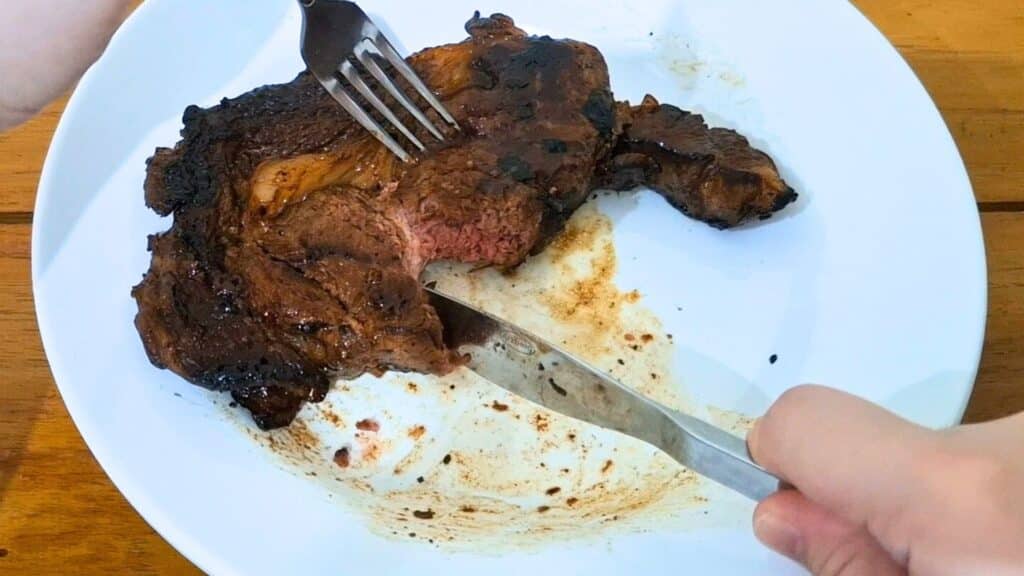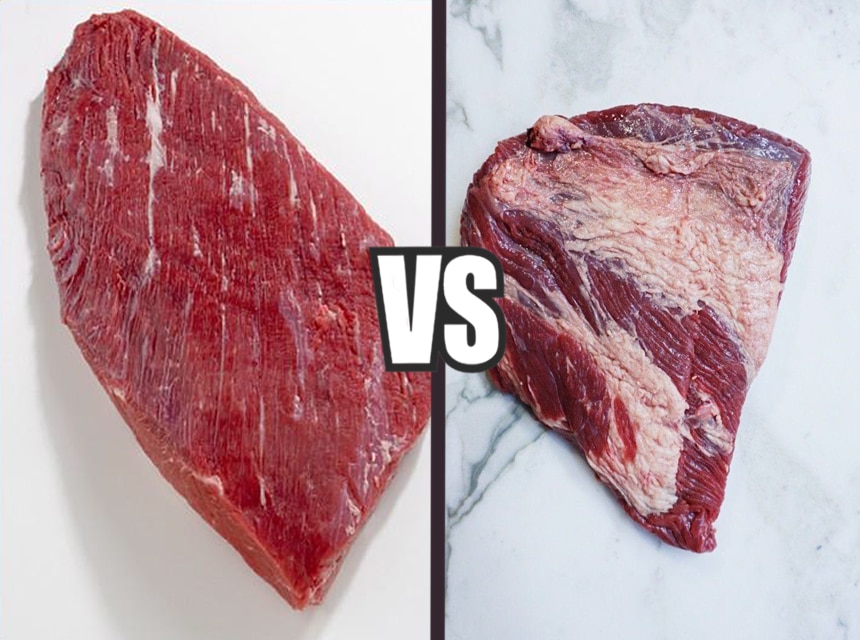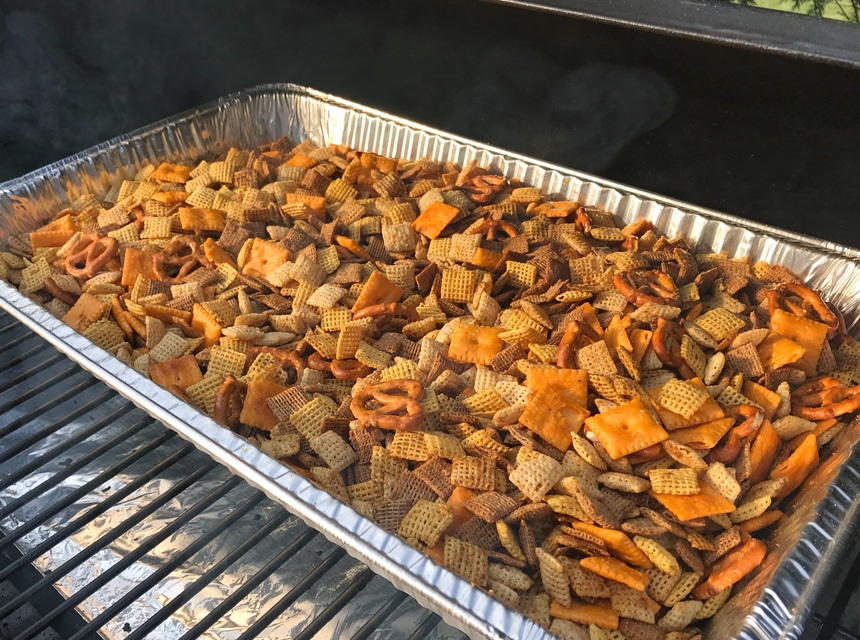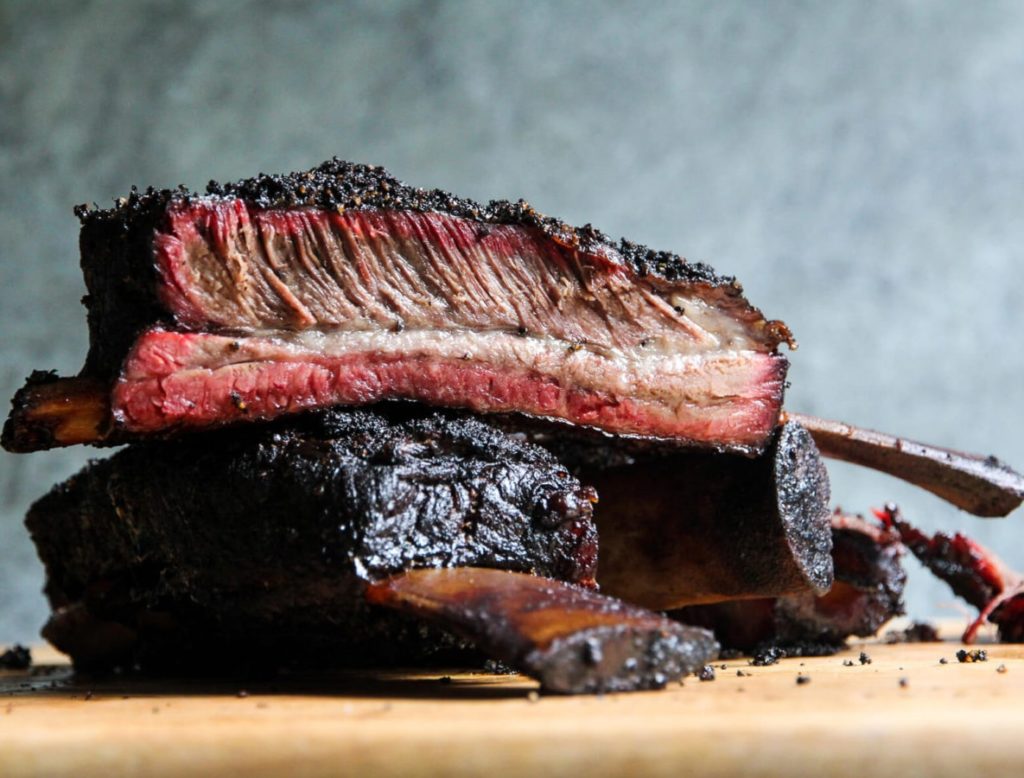

Nothing beats a delicious grilled steak. Of course, the word steak can refer to lots of different cuts of beef. Some have more fat, while some are quite lean. The one thing that all cuts of steak have in common is how good they taste, but that is where the similarities end. This is precisely why the debate of sirloin vs. ribeye is such an interesting topic. Each of these cuts of meat has its own “personality” that makes them an exceptional option for anyone’s table. Of course, many folks often wonder, which one is better?
That is a very tricky question to answer because it all comes down to what you are looking for in a steak. Do you want a leaner cut or one riddled with marbled fat? Are you on a budget, or can you afford to splurge a bit on a delectable meal? We will answer these questions and more in our thorough analysis of these two titans of the grilling world.
A
sirloin
Trusted Source
Cut of beef - Wikipedia
During butchering, beef is first divided into primal cuts, pieces of meat initially separated from the carcass. These are basic sections from which steaks and other subdivisions are cut. The term “primal cut” is quite different from “prime cut”, used to characterize cuts considered to be of higher quality.
en.wikipedia.org
steak can be cut in many different ways. As such, it has several different names, which include T-bone and top sirloin. Each of these pieces of meat is much leaner than a ribeye. As such, a sirloin steak is not quite as tender or flavorful but is much friendlier on your budget.
Sirloin is cut from the midsection of the cow on the top half of the body. It is between the loin and round. This style of steak is usually cut from the back part of the animal. Since this section is relatively large, it should come as no surprise that it can be divided into many different types of steak based on tenderness. The top sirloin is the most common sirloin that you will find at the supermarket or in a restaurant. While all sirloin is a chewier steak, this cut is the most tender of the bunch. The bottom sirloin, which is much tougher, is made from the lower section of the cow.
Since sirloin steaks do not contain as much fat as a ribeye, it is not quite as flavorful. It is also cut from a tougher muscle, so it is a bit chewier as well. That is not to say, however, that it doesn’t taste good. Since this steak is made from a tougher muscle, it will have a much stronger beef flavor, which is absolutely delicious. You can also alter the flavor of a sirloin steak quite easily if you dry age it. This adds a bit more flavor and also tenderizes the meat a good deal, all while costing a bit less than a ribeye.
These steaks should not have too much fat on them. As such, you will probably not have to spend too much time trimming them before they hit your grill or stovetop. Sirloins are not all that receptive to marinades, but they still can be done. If you do decide to use a marinade on these steaks, you should limit it to 1 or 2 hours at most. Anything longer than that is just making the steak wet.
Once the steak is prepared for cooking, you need to get your grill up to speed. If you are using a charcoal setup, then you should create a two-zone cooking grill. This is done by moving all of the coals to one side of the grill, which allows for more even cooking. On a gas grill, you should heat it up to medium heat on one side and low heat on the other.
Once the grill is up to the correct temperature, you need to grill the sirloin on direct heat for three minutes per side. Afterward, you can move the steak to the indirect heat side of the grill to finish up the cooking. Depending on how you want your steak done, you should use a meat thermometer so that you can make sure to get it to the right temperature. Once the steak is finished, allow it about 5 minutes to cool off, and then enjoy!
A ribeye Trusted Source Cut of beef - Wikipedia During butchering, beef is first divided into primal cuts, pieces of meat initially separated from the carcass. These are basic sections from which steaks and other subdivisions are cut. The term “primal cut” is quite different from “prime cut”, used to characterize cuts considered to be of higher quality. en.wikipedia.org steak is a meat cut from in between the ribs of a beef steer. This is what gives it its name, as you might have guessed. This steak is noted for its delightful marbling of fat, which gives it a tender and flavorful taste. It is also a bit more expensive than a sirloin steak, thanks to this extra amount of marbling.
As the name would imply, this cut of steak is sliced from the rib meat. This cut typically comes from the middle of the rib steak, which is why it is called a rib eye. It specifically comes from ribs 6-12 on a cow. These steaks tend to be a bit thicker and have a lot more marbling of fat than a sirloin. They are also extremely tender. This is because they are attached to a muscle that is rarely ever used by the cow during its life. Since the muscle never has a chance to become hardened and strong, it remains tender, which makes for a delicious and easy to chew steak.
When you hear the phrase melt in your mouth, you could easily conjure up images of a ribeye steak. Thanks to the high-fat content of this steak, it is extremely tender and juicy, which makes for a delicious meal. This steak also is more receptive to marinades and rubs due to its porous and tender surface, although you don’t want to overdo it.
Leaving a ribeye in a marinade will make it too tender, which will make it taste a lot less appetizing. Even without these marinades or rubs, ribeyes have a great flavor profile that is hard to top by any other steak on the market.
Since a ribeye is already a very tender cut of meat, you don’t want to marinate it for too long, if at all. The marinade could make the steak mushy, which is not very appealing at all. You might be better off rubbing it down with spices to add flavor since this won’t change its overall consistency. If there is too much fat, you can always trim a bit on your butcher block to fit your needs.
Much like the sirloin, when it comes time to grilling a ribeye, you should set up two different heat zones. One of these zones should be at medium-high and one on low. Depending on how thick the steaks are, you might need to sear them for about 4 or 5 minutes per side. After they have been seared, you need to move them to the low heat area of the grill with your tongs to finish. Using your digital thermometer, you should begin checking the steaks every 4 minutes to see if they are done. If you are looking for a medium-rare steak, you would want to remove them from the grill around 130 degrees Fahrenheit. Allow them about five minutes to cool a bit, and then dig in!
Though these two cuts of steak are very different from each other, they are still similar in a variety of ways. For instance, both of these steaks are extremely high in protein and several different vitamins and minerals. They are both delicious and relatively easy to grill, even for beginners. This is why they are both such popular options for restaurants and backyard barbecues alike.
Like all steak, both sirloins and ribeyes have some good points when it comes to their nutritional value and some less good points.
| Cut of Steak | Size of Cut | Calories | Calories from Fat | Total Fat | Protein | Cholesterol | Sodium |
| Sirloin | 4 ounces | 207 | 100 | 6.5 g | 34.5 g | 66 mg | 72 mg |
| Ribeye | 3 ounces | 213 | 150 | 17 g | 15 g | 57 mg | 48 mg |
While both of these steaks have plenty of flavors, they are very different from each other. Since sirloin is leaner, it tends to have a beefier flavor and be a bit chewier as well. It can be dry-aged or sliced thinly, of course, which will tenderize the meat a bit. Ribeye steaks tend to be extremely juicy and tender, thanks to all of the marbled fat. They are also made from much more tender muscles as well, which helps to add to their melt-in-your-mouth flavor.
As you would expect, a ribeye is going to be a bit more expensive than a sirloin. Even though both of these steaks are quite tasty, the amount of fat contained in a ribeye adds a lot to the price. The USDA Trusted Source What’s Your Beef – Prime, Choice or Select? | USDA The USDA grade shields are highly regarded as symbols of safe, high-quality American beef. Quality grades are widely used as a “language” within the beef industry, making business transactions easier and providing a vital link to support rural America. Consumers, as well as those involved in the marketing of agricultural products, benefit from the greater efficiency permitted by the availability and application of grade standards. www.usda.gov actually assigns ratings to different cuts of meat-based on the level of marbling. As such, ribeyes are the top cuts for many butchers, making them a bit pricier than a sirloin.
One other big difference that you will want to keep in mind, especially if you are just learning to use your grill, is that ribeye steaks are a bit harder to cook properly than a sirloin. Thanks to the high-fat content of ribeyes, they can burn quickly, which takes a bit of practice to master. Sirloin, on the other hand, is a very forgiving grill steak since it barely contains any fat at all.
No matter what type of steaks you are looking for, your local butcher shop should be your first stop if you are looking to get a good cut. Of course, these can be quite pricey as well since they usually do all of the prep work on their own. If you are looking to get a lower price on your meat, you might want to try a large high-end grocer, such as Wegman’s or Whole Foods. Try to look for organic options, as these usually have been raised in a better manner. You can also order both top sirloin and ribeye steaks online from reputable sellers as well, nowadays, which is extremely easy and convenient.
Getting a good steak is always a tough proposition. Especially when you are trying to decide between sirloin vs. ribeye, both of these cuts of meat are exceptionally delicious, though they are also quite different.
Ribeye steaks, for instance, are full of flavorful fat. This helps to make them extremely tender and juicy. This also makes them more expensive. Sirloin steaks, on the other hand, are less tender due to having less fat than a ribeye. Thankfully, they are still quite delicious and a bit cheaper as well. The bottom line when it comes to this very difficult decision is this: No matter which way you decide to go, you are going to get a great steak! They will both fill your need for meaty goodness and provide you with an amazing meal.





